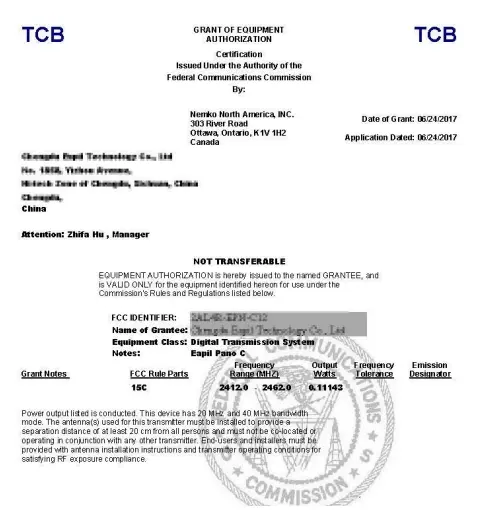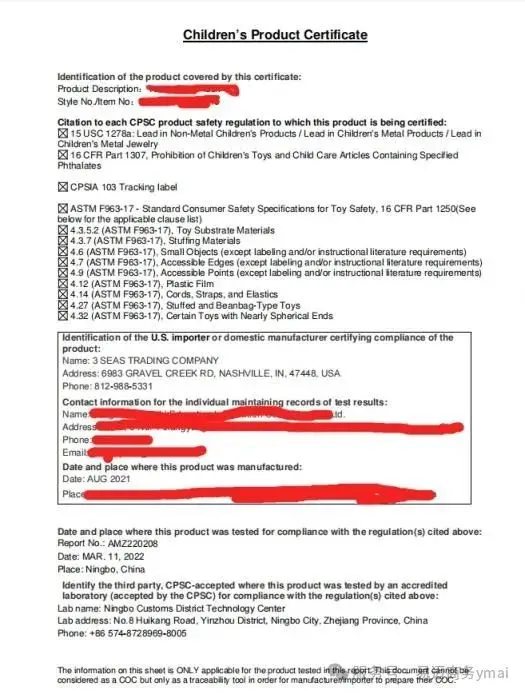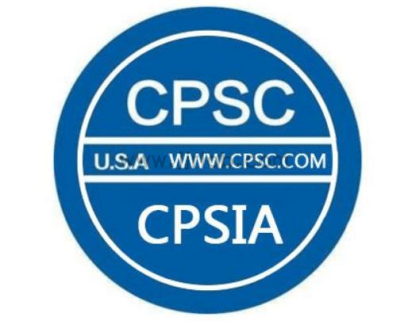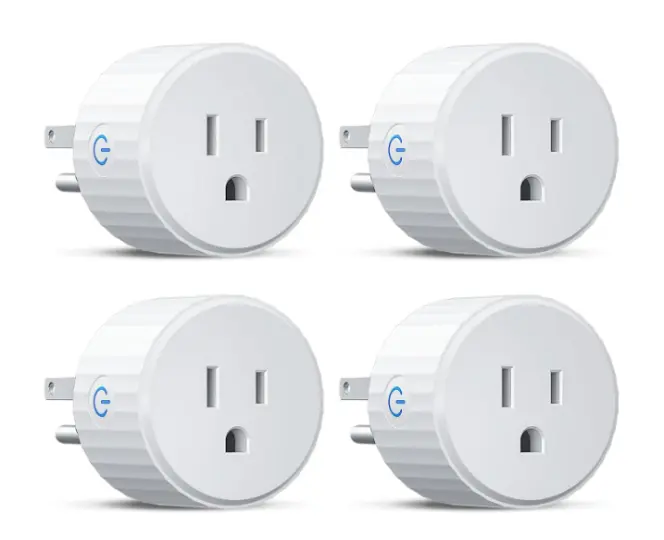
What is FCC ID?
Introduction to fcc id Certification
FCC ID is one of the mandatory FCC certification models in the United States, applicable to wireless products that are technically challenging. Products with wireless transmission frequencies, such as Bluetooth devices, Wi-Fi devices, wireless alarm systems, radio reception and transmission devices, telephones, computers, etc., require FCC ID certification. The certification for wireless products is approved directly by the FCC TCB (Telecommunication Certification Body), and the certification can be checked on the official FCC website in the United States. The processing time is 3-4 weeks, and no factory inspection is required. If the product standards remain unchanged, the certification is valid indefinitely.
Recognition of FCC Certification
FCC certification applies to over 50 states in the U.S., including Washington D.C. and U.S. territories. Although the FCC is based in the U.S., it is recognized by global regulatory bodies, manufacturers, suppliers, and other users of food components. In some countries, FCC standards may serve as statutory requirements for the production or import of food components. Globally, the FCC is a verified tool for establishing and managing quality key factors that enhance supplier and customer relationships. Notably, the issued FCC certificate can be kept confidential, meaning that the information cannot be found on the U.S. Federal Communications Commission website.
FCC Website Link: www.fcc.gov
Overview of Wireless Products
Products that can be used without wires or device connections are called wireless products, which include systems for transmitting and receiving wireless signals. Common wireless devices include mobile phones, wireless internet devices, cordless telephones, and walkie-talkies, all of which contain systems for sending and receiving wireless signals. In contrast, fixed telephones and computers do not qualify as wireless devices, as they lack systems for wireless signal transmission and reception.
How to Query FCC ID in the U.S.
01
FCC ID Query URL:
Access the query website at http://transition.fcc.gov/oet/ea/fccid for operations.
02
FCC ID Query Format:
On the page, under the "Grantee Code" section, enter the first three letters of the FCC ID number, and in the "Product Code" section, enter the remaining digits of the FCC ID number. If you do not have the FCC ID number, you can enter the full name of the applicant company that matches the report certificate in the "Applicant Name" section, and click on "start search" at the bottom of the page to begin the search, allowing you to query the application content.
U.S. FCC ID Application Process
First, apply for an FRN (FCC Registration Number) to fill out other forms.
If the applicant is applying for FCC ID for the first time, they need to apply for a permanent Grantee Code. While waiting for the FCC to approve and distribute the Grantee Code to the applicant, the applicant should expedite the testing of the device. Once all FCC-required materials are prepared and the testing report is completed, the FCC should have approved the Grantee Code. The applicant will use this Code, the testing report, and the required materials to complete FCC Form 731 and Form 159 online. After receiving Form 159 and payment, the FCC will start processing the certification application. The average time for processing ID applications is 60 days. Upon completion, the FCC will send the Original Grant of the FCC ID to the applicant. Once the applicant receives the certificate, they can sell or export the corresponding product.
Step 1: Application
1. Fill out the application form (we provide a blank template).
2. Provide product information including the product manual, schematic, circuit diagram, block diagram, working principle, and functional description, along with the product BOM (Bill of Materials).
Step 2: Quotation (Determine testing standards, testing time, and corresponding costs based on the provided information.)
Step 3: Payment and Sample Testing (After confirming the quotation, the applicant signs the "Application Form" and "Service Agreement," pays the full project fee, and prepares the test sample.)
Step 4: We arrange testing.
Step 5: If the test passes and the report is completed, we will submit the information to an FCC-authorized issuing agency for review.
Step 6: After the review is completed, the TCB agency issues the FCC ID certificate, and the company can use the fcc logo on the product after obtaining FCC certification.
Methods for Applying for FCC ID Certification
There are generally two ways to apply for FCC ID certification:
1. Directly send the product to a U.S. TCB laboratory to complete the certification, but this method incurs higher costs and is less controllable in terms of time.
2. Send the product to an FCC-recognized laboratory (e.g., Quansheng) for testing, preparing documents, and completing reports. Then, send the testing report to the TCB agency for certification. Currently, most clients prefer this method. FCC ID certification can be verified online in the U.S. for authenticity!
Sample of FCC ID Certificate

Documents and Requirements for FCC ID Certification Submission
Document Submission:
1) FCC application form: The applicant company's name, address, contact information, product name and model, and usage standards must be accurate.
2) FCC authorization letter: Must be signed and stamped by the applicant company's contact and scanned into an electronic file.
3) FCC confidentiality letter: This is a confidentiality agreement signed between the applicant company and the TCB agency regarding product information, requiring the contact's signature and stamp, and scanned into an electronic file.
4) Block diagram: Must illustrate all oscillators, along with their frequencies, consistent with the circuit diagram.
5) Circuit diagram: Must match the frequencies, quantities, and positions of oscillators as shown in the block diagram.
6) Circuit description: Should be in English and clearly describe the principles of the product's functionality.
7) User manual: Must contain the FCC warning statement.
8) Labels and label location: Labels must include the FCC ID number and statement, with prominent placement.
9) Photos of the product inside and out: Photos should be clear and, if necessary, include notes.
10) Testing report: Must be comprehensive based on standard clauses for evaluating the product.
For 4G Bluetooth, the following information is required for FCC ID application:
1. Name of the applicant, product name, model, address, phone, fax, contact person and their position.
2. For the transmitting part, the fundamental frequency (it’s best to provide the frequency band being used).
3. The applicant's FCC registration number (FRN).
4. FCC ID includes Grantee Code (3-character letter or number) and product code (1-14 character letter or number).
5. Location and specifications of the FCC label.
6. Simple working principle and functional description.
7. Principle block diagram.
Technical Report for FCC ID Certification
In addition to providing basic information, the applicant must submit a technical report. The technical report should at least contain the following contents:
1. The name and address of the product manufacturer and the certification applicant.
2. FCC ID.
3. Installation and operating instructions for the final product. For products still in the prototype stage, if a final manual cannot yet be provided, a draft may be submitted, with a formal manual provided once it is finalized.
4. Type of transmission and frequency range.
5. The range of power values during normal operation or power level, as well as the limits specified by corresponding regulations. If the power is adjustable, the method of adjustment must also be indicated.
6. The voltage and current values fed into the RF amplifier circuit during normal operation, along with the procedure for adjusting power values within the normal or specified power level range.
7. Circuit diagrams and corresponding principle descriptions for all circuits and components related to frequency determination and stability, suppression of spurious emissions, modulation signals, and power limitations.
8. Photos or images of the product label.
9. Product photos from various angles, including internal and external structures, requiring photos to be 8×10 inches, preferably with a ruler to indicate geometric dimensions. External photos should clearly show the product structure, layout, control keys, and buttons; internal photos should reflect the internal structure, component positions, and frame structure. If these photos are included in the manual submitted to the FCC, the technical report may only include necessary supplementary explanations.
10. For products using digital modulation techniques, the report must detail the characteristics of the modulation system, including frequency and phase response of filters, amplitude response characteristics, and the modulation waveform when the product operates at maximum rated power.
11. Testing methods and results for relevant performance indicators.
Testing Items for FCC ID Certification
Testing includes EMC + RF.
fcc testing Standards
- fcc part 15 - Computing Devices, Cordless Telephones, Satellite Receivers, TV Interface Devices, Receivers, Low Power Transmitters
- fcc part 18 - Industrial, Scientific, and Medical Equipment, i.e., Microwave, RF Lighting Ballast (ISM)
- FCC Part 22 - Cellular Telephones
- FCC Part 24 - Personal Communications Systems, covering licensed personal communications services
- FCC Part 68 - All Types of Telecommunications Terminal Equipment, i.e., Telephones, modems, etc.
- FCC Part 74 - Experimental Radio, Auxiliary, Special Broadcast and other program distribution services
- FCC Part 90 - Private Land Mobile Radio Services, including Paging Devices and Mobile Radio Transmitters, covering land mobile radio products such as high-powered walkie-talkies
- FCC Part 95 - Personal Radio Service, including devices such as Citizens
Band (CB) transmitters, radio-controlled (R/C) toys, and devices for utilization under the family radio service.
Confirmation Information for FCC ID Certification
The confirmation information is a confirmation letter, where the applicant gives a final confirmation of the authenticity of all submitted application information. If there is any falsification in the submitted information, the applicant may face penalties such as fines, imprisonment, license revocation, and confiscation. The applicant must also commit to complying with regulations related to controlled substances.
Penalties for Non-Compliance with FCC
U.S. laws are known for their strictness. The government imposes severe penalties on non-compliant products to protect consumer interests. The severity of these penalties is typically enough to bankrupt violators, making it unlikely for individuals to willfully violate the law.
Specific Penalties for Sellers of Non-Compliant Products Include:
1. All non-compliant products will be confiscated.
2. Fines ranging from $100,000 to $200,000 for each individual or organization.
3. Fines equal to twice the sales revenue of the non-compliant products.
4. Daily fines of $10,000 for each violation.
How Much Does it Cost to Process FCC ID?
For ordinary wireless products like wireless remote controls, Bluetooth speakers, tablets, etc., obtaining FCC ID certification costs over $1,600. For other types of wireless products, it is recommended to conduct both FCC-Sdoc and FCC-ID certifications simultaneously, with costs around $2,400.
Email:hello@jjrlab.com
Write your message here and send it to us
 Toy Toxicology Testing CA
Toy Toxicology Testing CA
 CPSIA Compliance for Children's Products
CPSIA Compliance for Children's Products
 Food Contact Items Testing
Food Contact Items Testing
 Energy Star Testing Laboratory
Energy Star Testing Laboratory
 Do I Need to Test Every Color for CPSIA Compliance
Do I Need to Test Every Color for CPSIA Compliance
 Accredited Medical Device Testing Lab
Accredited Medical Device Testing Lab
 Safety Testing for Baby Wrap
Safety Testing for Baby Wrap
 United States Electrical Plug Certification
United States Electrical Plug Certification
Leave us a message
24-hour online customer service at any time to respond, so that you worry!




